by Eric Meier
When attempting to identify a wood sample, it’s important to keep in mind the limitations and obstacles that are present in our task. Before starting, please have a look at The Truth Behind Wood Identification to approach the task in a proper mindset; I consider the linked article to be required reading for all those visiting my site with the intent of identifying wood.
1. Confirm it is actually solid wood.
Before proceeding too much farther into the remaining steps, it’s first necessary to confirm that the material in question is actually a solid piece of wood, and not a man-made composite or piece of plastic made to imitate wood.
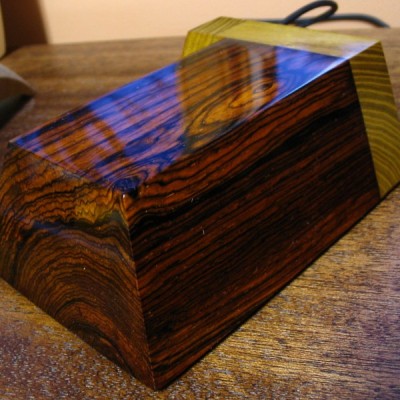
Can you see the end-grain?
Manufactured wood such as MDF, OSB, and particleboard all have a distinct look that is—in nearly all cases—easily distinguishable from the endgrain of real wood. Look for growth rings—formed by the yearly growth of a tree—which will be a dead-giveaway that the wood sample in question is a solid, genuine chunk of wood taken from a tree.
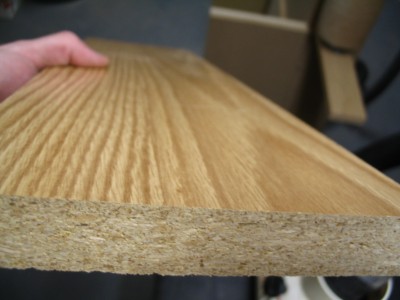
Is it veneered?
If you see a large panel that has a repeating grain pattern, it may be a veneer. In such cases, a very thin layer of real wood is peeled from a tree and attached to a substrate; sometimes the veneer can be one continuous repeating piece because it is rotary-sliced to shave off the veneer layer as the tree trunk is spun by machines. Assuming it is a real wood veneer with a distinct grain and texture—and not merely a piece of printed plastic—you may still be able to identify the outer veneer wood in question, but you should still realize that is it only a veneer and not a solid piece of wood.
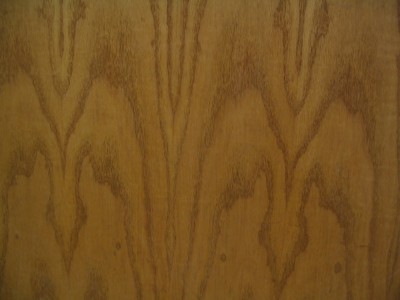
Is it painted or printed to look like wood?
Many times, especially on medium to large-sized flat panels for furniture, a piece of particleboard or MDF is either laminated with a piece of wood-colored plastic, or simply painted to look like wood grain. Many of today’s interior hardwood flooring planks are good examples of these pseudo-wood products: they are essentially a man-made material made of sawdust, glues, resins, and durable plastics.
2. Look at the color.
Some questions to immediately ask yourself:
Is the color of the wood natural, or is it stained?
If there is even a chance that the color isn’t natural, the odds are increased that the entire effort of identifying the wood will be in vain.
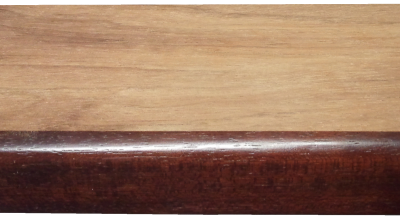
Is it weathered or have a patina?
Many woods, when left outside in the elements, tend to turn a bland gray color. Also, even interior wood also takes on a patina as it ages: some woods get darker, or redder, and some even get lighter or lose their color; but for the most part, wood tends to darken with age.
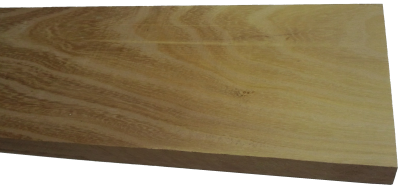
Is it possible to sand or plane the board to see the natural raw color of the wood?
The most predictable baseline to use when identifying wood is in a freshly sanded state. This eliminates the chances of a stain or natural aging skewing the color diagnosis of the wood.
3. Observe the wood grain.
If the wood is unfinished, then look at the texture of the grain. Ask yourself these questions:
Does the wood have an open, porous texture?
Most softwoods will be almost perfectly smooth with no grain indentations, while many common hardwoods have an open pore structure, such as oak or mahogany; though there are some hardwoods that are also smooth to the touch, such as maple.
Can you tell if the wood is quartersawn or plainsawn?
By observing the grain patterns, many times you can tell how the board was cut from the tree. Some wood species have dramatically different grain patterns from plainsawn to quartersawn surfaces. For instance, on their quartersawn surfaces, lacewood has large lace patterns, oak has flecks, and maple has the characteristic “butcher block” appearance.
Is there any figure or unusual characteristics, such as sapwood, curly or wild grain, burl/knots, etc.?
Some species of wood have figure that is much more common than in other species: for example, curly figure is fairly common in soft maple, and the curls are usually well-pronounced and close together. Yet when birch or cherry has a curly grain, it is more often much less pronounced, and the curls are spaced farther apart.
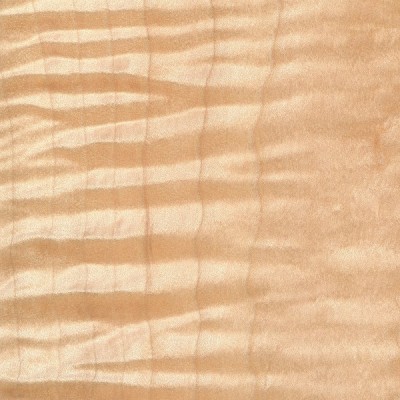
4. Consider the weight and hardness of the wood.
If it’s possible, pick the piece of wood up and get a sense of its weight, and compare it to other known wood species. Try gouging the edge with your fingernail to get a sense of its hardness. If you have a scale, you can take measurements of the length, width, and thickness of the wood, and combine them to find the density of the wood. This can be helpful to compare to other density readings found in the database. When examining the wood in question, compare it to other known wood species, and ask yourself these questions:
Is the wood dry?
Wood from freshly felled trees, or wood that has been stored in an extremely humid environment will have very high moisture contents. In some freshly sawn pieces, moisture could account for over half of the wood’s total weight! Likewise, wood that has been stored in extremely dry conditions of less than 25% relative humidity will most likely feel lighter than average.
How does the wood’s weight compare to other species?
Taking into account the size of the board, how does its weight compare to other benchmark woods? Is it heavier than oak? Is it lighter than pine? Look at the weight numbers for a few wood species that are close to yours, and get a ballpark estimate of its weight.
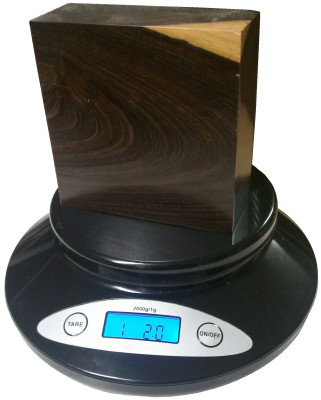
How hard is the wood?
Obviously softwoods will tend to be softer than hardwoods, but try to get a sense of how it compares to other known woods. Density and hardness are closely related, so if the wood is heavy, it will most likely be hard too. If the wood is a part of a finished item that you can’t adequately weigh, you might be able to test the hardness by gouging it in an inconspicuous area. Also, if it is used in a piece of furniture, such as a tabletop, a general idea of its hardness can be assessed by the number and depth of the gouges/dings in the piece given its age and use. A tabletop made of pine will have much deeper dents than a tabletop made of Oak. Additionally, you can always try the “fingernail test” as a rough hardness indicator: find a crisp edge of the wood, and with your fingernail try to push in as hard as you can and see if you’re able to make a dent in the wood.
5. Consider its history.
Many times we forget common sense and logic when attempting to identify wood. If you’ve got a piece of Amish furniture from Pennsylvania, chances are more likely that the wood will be made of something like black walnut or cherry, and not African wenge or jatoba. You might call it “wood profiling,” but sometimes it can pay to be a little prejudiced when it comes to wood identification. Some common-sense questions to ask yourself when trying to identify a piece of wood:
Where did it come from?
Knowing as much as you can about the source of the wood—even the smallest details—can be helpful. If the wood came from a wood pile or a lumber mill where all the pieces were from trees processed locally, then the potential species are immediately limited. If the wood came from a builder of antique furniture, or a boat-builder, or a trim carpenter: each of these occupations will tend to use certain species of woods much more often than others, making a logical guess much simpler.
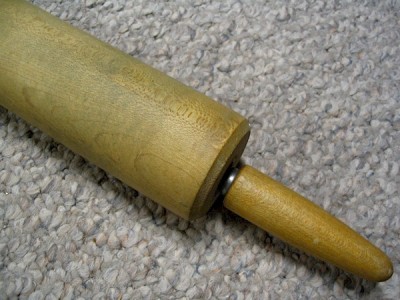
How old is it?
As with the wood’s source, its age will also help in identification purposes. Not only will it help to determine if the wood should have developed a natural patina, but it will also suggest certain species which were more prevalent at different times in history. For instance, many acoustic guitars made before the 1990s have featured Brazilian rosewood backs/sides, yet due to CITES restrictions placed upon that species, East Indian rosewood became a much more common species on newer guitars. (And this is a continuing shift as newer replacements are sought for rosewoods altogether.)
How large is the piece of wood?
Some species of trees are typically very small—some are even considered shrubs—while others get quite large. For instance, if you see a large panel or section of wood that’s entirely black, chances are it’s either painted, dyed, or stained: Gaboon ebony and related species are typically very small and very expensive.
What is the wood’s intended use?
Simply knowing what the wood was intended for—when considered in conjunction with where it came from and how old it is—can give you many clues to help identify it. In some applications, certain wood species are used much more frequently than others, so that you can make an educated guess as to the species of the wood based upon the application where it was used. For instance, in the United States: many older houses with solid hardwood floors have commonly used either red oak or hard maple; many antique furniture pieces have featured quartersawn white oak; many violins have spruce tops; many closet items used aromatic red cedar, and so forth. While it’s not a 100% guarantee, “profiling” the wood in question will help reduce the number of possible suspects, and aid in deducing the correct species.
6. Find the X-Factor.
Sometimes, after all the normal characteristics of a sample have been considered, the identity of the wood in question is still not apparent. In these instances—particularly in situations where a sample has been narrowed down to only a few possible remaining choices—it’s sometimes helpful to bring in specialized tests and other narrower means of identification.
The following techniques and recommendations don’t necessarily have a wide application in initially sorting out wood species and eliminating large swaths of wood species, but will most likely be of use only as a final step in special identification circumstances.
Odor
Believe it or not, freshly machined wood can have a very identifiable scent. When your eyes and hands can’t quite get a definitive answer, sometimes your nose can. Assuming there is no stain, finish, or preservative on or in the wood, quickly sand, saw, or otherwise machine a section of the wood in question, and take a whiff of the aroma.
Although new scents can be very difficult to express in words, many times the scent of an unknown wood may be similar to other known scents. For instance, rosewoods (Dalbergia spp.) are so named for their characteristic odor that is reminiscent of roses. Although difficult to directly communicate, with enough firsthand experience scents can become a memorable and powerful means of wood identification.
Fluorescence
While certain woods can appear basically identical to one another under normal lighting conditions, when exposed to certain wavelengths—such as those found in blacklights—the wood will absorb and emit light in a different (visible) wavelength. This phenomenon is known as fluorescence, and certain woods can be distinguished by the presence or absence of their fluorescent qualities. See the article Fluorescence: A Secret Weapon in Wood Identification for more information.
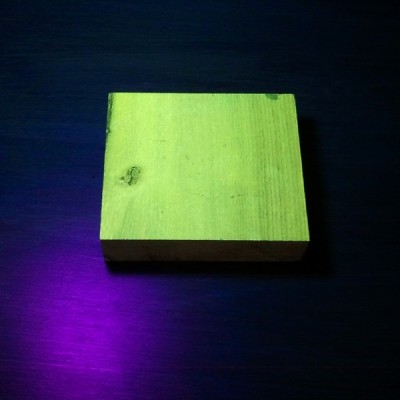
Chemical Testing
There are only a small number of chemical tests regularly used on wood, most of which are very specialized and were developed to help distinguish easily confused species with one another. They work by detecting differences in the composition of heartwood extractives. A chemical substance (called a reagent) is usually dissolved in water and applied to the wood surface: the surface is then observed for any type of chemical reaction (and accompanying color change) that may occur. Two of the most useful are the tests that are meant to separate Red and White Oak, and Red and Hard Maple.
Heartwood Extractives Leachability
Sometimes a wood species will have heartwood extractives that will be readily leachable in water and capable of conspicuously tinting a solution of water a specific color. For instance, the heartwood extractives contained in osage orange (Maclura pomifera) contain a yellowish-brown dye that is soluble in water. (This can sometimes be observed anecdotally when the wood is glued with a water-based adhesive: the glue’s squeeze-out is an unusually vibrant yellow.)
In a simple water extract color test, wood shavings are mixed with water in a vial, test tube, or other suitably small container, and the color of the water is observed after a few minutes. If the heartwood extractives are leachable by water, then a corresponding color change should quickly occur.
In addition to osage orange (Maclura pomifera), merbau (Intsia spp.), and rengas (Gluta spp. and Melanorrhoea spp.) are also noted for their readily leachable heartwood extractives. Because this property is quite uncommon, it can serve to quickly differentiate these woods from other lookalikes.
7. Look at the endgrain.
Perhaps no other technique for accurate identification of wood is as helpful and conclusive as the magnified examination of the endgrain. Frequently, it brings the identification process from a mostly intuitive, unscientific process into a predictable, repeatable, and reliable procedure.
Looking at the endgrain with a magnifier shouldn’t be a mystifying or esoteric art. In many cases, it’s nearly as simple as examining small newsprint under a magnifying glass. There are three components necessary to reap the full benefits contained in the endgrain:
I. A prepared surface.
When working with wood in most capacities, it becomes quickly apparent that endgrain surfaces are not nearly as cooperative or as easily worked as face grain surfaces. However, in this case, it is absolutely critical that a clear and refined endgrain surface is obtained.
For a quick glance of a softwood sample, a very sharp knife or razor blade can be used to take a fresh slice from the endgrain. However, in many denser species, especially in tropical hardwoods, one of the best ways to obtain a clear endgrain view is through diligent sanding. It’s usually best to begin with a relatively smooth saw cut (as from a fine-toothed miter saw blade) and proceed through the grits, starting at around 100, and working up to at least 220 or 320 grit, preferably higher for the cleanest view.
II. The right magnifier.
It need not be expensive, but whatever tool is used to view the endgrain should have adequate magnifying power. In most instances, 10x magnification is ideal, however, anything within the range of 8 to 15x magnification should be suitable for endgrain viewing. (Standard magnifying glasses are typically in the range of 2 to 4x magnification.)
These stronger magnifiers, sometimes called loupes, usually have a smaller viewing area than standard magnifying glasses. Fancier models—with built in lights, or larger viewing surfaces—are available at a premium; but the most basic models are usually only a few dollars.
III. A trained eye.
The third element that constitutes a proper endgrain examination is simply knowing what to look for. In analyzing the patterns, colors, shapes, and spacing of the various anatomical features, there is a veritable storehouse of information within the endgrain—all waiting to be unlocked. Yet, if these elements have not been pointed out and learned, the array of features will simply seem like an unintelligible jumble. The discipline of recognizing anatomical endgrain features is not easily summed up in a few sentences or even a few paragraphs, but it is nonetheless critical to the identification process. To this end, an in-depth look should be given to the various categories, divisions, and elements that constitute endgrain wood identification on the macroscopic level. (In this regard, macroscopic denotes what can be seen with a low-powered, 10x hand lens—without the aid of a microscope—rather than simply what can be seen with the naked eye.) Because the anatomy between softwoods and hardwoods is so divergent, each will be considered and examined separately:Still stumped?
If you have a mysterious piece of wood that you’d like identified, you’ve got a few options for next steps:USDA’s Forest Products Laboratory
You can mail your physical wood samples to the Center for Wood Anatomy Research.
Pros:
- Free
- Professional wood identification
Cons:
- Only available to US citizens
- Slow turnaround times (up to a month or more)
- Limited to three IDs per year
See their Wood ID Factsheet for more info.
Alden Identification Service
You can mail your physical wood samples (even small sections taken from antiques) to Alden Identification Service.
Pros:
- Professional wood identification
- Faster turnaround times (ranging from a few days to a week or two)
Cons:
- Paid service
See their ordering page for more info. (Note that Harry Alden has written several books while at USDA, including both Hardwoods and Softwoods of North America.)
Ask for help online
If the wood ID is merely a curiosity, or non-critical, you can post pictures of the wood in question.
Pros:
- Free
- No need to send physical samples
Cons:
- Greatly limited by the quality of the pictures provided
- Extra work usually required to get adequate clarity in photos
See article of Common US Hardwoods to help find the most commonly used woods.
Get the hard copy
 If you’re interested in getting all that makes The Wood Database unique distilled into a single, real-world resource, there’s the book that’s based on the website—the Amazon.com best-seller, WOOD! Identifying and Using Hundreds of Woods Worldwide. It contains many of the most popular articles found on this website, as well as hundreds of wood profiles—laid out with the same clarity and convenience of the website—packaged in a shop-friendly hardcover book.
If you’re interested in getting all that makes The Wood Database unique distilled into a single, real-world resource, there’s the book that’s based on the website—the Amazon.com best-seller, WOOD! Identifying and Using Hundreds of Woods Worldwide. It contains many of the most popular articles found on this website, as well as hundreds of wood profiles—laid out with the same clarity and convenience of the website—packaged in a shop-friendly hardcover book. 


Why I will no longer be replying to every wood ID request I’ve replied to literally thousands of wood ID requests on this site over the past 13+ years, but as the site’s popularity has grown, so has the time demands for ID on a daily basis. (Contrary to what some may seem to think, I am not some all-knowing wood wizard that can instantly ID your wood. It can actually take me a long time to sift through a lot of different resources.) Over the past few years, my backlog of pending wood species to be added to the… Read more »
Hi Eric!! You were so wonderful, abou 1.5 years ago, identifying wood on a clock– you said it was poplar (I was kind of disappointed! But I was incredibly thankful, still am!) Wondering if you could **please** take a stab at this one?? I’m hoping for mahogany, but we’ll see! Dying (not literally) to find out. If it’s mahogany, is it probably African or South American? It was made in 1987
One more pic:
I never knew that you can determine wood by putting it under blacklights. Next week I will be doing woodworking with my uncle to make a new chair and I want to make sure I bring the right wood. Thanks for the tips and I’ll be sure to research more different types of wood and their properties.
Wondering if the wood inside this cabinet is maple or something else. To me, it looks like the side of the cabinet is a maple plywood but the back of the cabinet is something else. Any insight?
Could anyone tell me if this is truly a solid mahogany door? I’ve never seen mahogany with stripes.
Where did you find these striped mahogany doors? I am trying to identify the wood on a set of antique pocket doors that also have dark horizontal stripes. Are these new or old doors?
It looks like Sapele Mahogany to me. Who is the manufacturer?
Thanks very much Eric for narrowing down the ID of my mystery wood. After some Googling, I’m leaning toward White Pine, but heck it’s all a mystery. Interestingly, my late father was a forester and well skilled at this identification talent. Another reason to miss lost knowledge.
Hola; Por favor, alguien podria decirme de que color es esta madera?. Gracias
Looking to buy a solid oak dining table, looking at this one but the lady only wants $150 for it and 6 chairs, which I find hard to believe if solid oak. Said it’s Amish made.
Hi. can anyone help me identify this cross cut slab. thank you
I recently saw a condo that had this gorgeous wood floor, which is now off the market. I’ve attached a picture. Can you tell me what kind of wood this is (I like both the color and the intricacies of the detail in the grain.) This would really help me out! Thank you!
I think what makes it stand out to you is probably the color/style of the stain as it is very high contrast. Flatsawn planks (versus quartersawn) give a more chaotic grain pattern, and a stain with a darker pigment will tend to accentuate the annual rings. It looks like a ring-porous hardwood, some possiblities used in North America are oak, ash, and hickory. But it’s the stain that gives it that look — darker pigment and a more subdued dye color. The dye colors the body of the wood while the pigment colors the growth rings.
Hola ! Podrías decirme qué tipo de madera es este parquet?
Is possible olivo o nogal ?
Can anyone tell me what type of woods are used on this old table top?
Oak, Maple, Walnut?
hello, i would have to agree with you. Although, i only see 3 different kinds if wood on this table, explain that to me?
Last one….
May, is it possible to get pictures that are closer up to see what the grain looks like a little better. Hard to tell from that distance.
Also, is that last picture of the same kind of wood as the other pictures? It looks significantly redder in color than the others, unless that is an issue with the camera.
Another one…sorry I may have to reduce the size to post a better closeup but interested in thoughts. I was thinking heart pine and chestnut mix.
Trying to get the side of the box bay, which I think is chestnut.
Let’s see….
Hi Eric, I have some interior trim pics. I think it’s the same species. Thx!
And a couple more to increase confidence!
Hi, here are a couple of others. I will try and get a better closeup. The reddish tone is from the dye–this was a restoration project. All the trim is about 120 years old and zero rot.
Two more…
Another…
Couple more…
Another shot…
Do I hear chestnut? Lots of cathedral and wild grain patterns. Turn of the century house in the mid-atlantic/northeast.
I suspect the perpendicular markings of this wood will help someone identify it. I know nothing of its origin. Freshly cut it is blond and brown. I can scratch it with my fingernail. It does not have a heavy turpentine like smell and seems, in fact, a bit more ‘floral’. I found it as a generic piece of old 1″ x 4″, weathered and non-descript.
Ideas?
Can’t tell from the pictures, sorry. Is that the natural wood color, or is it heavily weathered?
If possible, it would help to see a clear closeup picture of the endgrain.
Here is an end grain and flipside pic. See that the two “faces” look like two different species?
These are small freshly cut & sanded pieces. See my original description.
These help?
They all appear to be the same species. It does look like a species of pine to me; the little dark streaks running parallel to the grain on the face of the boards appear to be resin canals. Not sure on species but it appears to be very quickly grown tree(s) based on the very wide spacing of the growth rings (basically only one growth ring for the entire 1×4).
Can you identify this wooden jewelry box
Looks like a spalted wood. Those kind of dark, thin lines are sometimes called “ink line” spalting and tend to be the most desirable. Most likely it is spalted maple, but could be a number of possible species, tamarind also comes to mind, but I would say most likely candidate is spalted maple.
Can anybody tell me are my kitchen cupboards pine or oak??
They are softwood, possibly pine or another softwood species.
Bought an old desk that had a yellow veneer over the entire thing that I’ve started sanding through.
I’m guessing pine based on the grain pattern and the fact that the whole thing is made from 1/2 inch width wood. That being said, I was unable to mark it with my fingernail, so maybe old pine is harder?
Lil help?
Another Picture
That really looks like maple to me.
I sent the wrong picture I’m sorry
Hello I learned a lot today reading your article. thank you for all the information. I’ve been going through the comments and pictures and thought for sure I’d be able to figure it out , Nope ..I’m still having a little bit of trouble If you don’t mind I could really use your help Finding out what our two Amish tables are made out of . They were Handmade by my dad’s best friend. Over 50 years ago but you wouldn’t know that by looking at them , they’re beautiful . They’re very sturdy , Hard wood , 30 inch… Read more »
Hi can anyone help me identify the wood of this table that belonged to my late gran.
Thanks!
Can someone let me know what type of wood this is. It’s a bookcase made of 3/4″ x 1.5″ to 2.5″ boards. It is extremely heavy and has numerous Black knots. I want to sand, fill holes/knots and refinish. Any suggestions would help tremendously.
Hi, looks like Oak to me. The dark depressions/trenches running parallel to the grain are actually called pores, indicative of oak, ash, walnut and mahogany, which allowed the sap and other nutrients to travel through the body of the tree when it was alive.
Eric , es posible que esta madera de parquet sea iroko? Gracias
Que madera es ? Iroko?
Hi, trying to figure out what kind of wood my table is made from. It’s one solid piece 8’x3’. (The top). VERY heavy and not stained.
Apologies, the photo isn’t all that great and doesn’t give much light or detail, but it LOOKS like Douglas Fir or some variation of Yellow or Knotty Pine.
Trying to figure out what type of wood this is. I’m guessing oak or a type of oak but unsure. Also trying to figure out the age. Obviously a work in progress!!
I bought this dresser about 20 years ago and don’t even remember stripping it but think I did as the back of the piece shows a darker stain. I have two questions please 1)can anyone tell me what kind of wood this is. 2) Can you also advise what grits of sandpaper I should use to get it ready for a gel stain and top coat? It feels fairly smooth so I don’t believe i need to go coarse.
It’s knowns a satin wood, google it.
Yes, I believe that is East Indian Satinwood. Very nice appearance. I wouldn’t stain it. I would just put a protective coat of glossy polyurethane to present its natural beauty. But that’s my opinion. :)
picture 3
Picture 2
Could anyone help me identify the type of wood this is? Will so much appreciate your assistance.
Lodge Pole Pine
Hi there! Thanks for having this great website =) We have a circa 130 yr old house in the South central USA. These photos are of the inside of a wall built in cupboard door which I suspect may have been added in the 1910s or 20s.(?) The knobs on the outside of the doors are solid wood with flathead screws. We were told the house was constructed with a lot of black walnut including attic beams and subfloors. I took woodshop in high school and thought I could recognize woods but this house has me stumped; I can’t even… Read more »
Is there any way of telling what kind of wood this is made of just by these pictures?
Hi, can you identify the wood used in this table, please.
It’s very heavy, so I assume it’s not veneer.
Anyhow, the inner parts look to me like root wood of some kind.
Thanks a lot.
Anna
Hey there
Could you help me identify this wood? I’m struggling
Thank you :)
I took a better picture:
I am trying to identify this wood. Any ideas?
Another shot..
Can anyone identify this wood? It’s a 40+ yr old parson’s desk – thanks
It has a sweet smell
Douglas Fir or Yellow Pine ?
Can you help me out by confirming what type of wood my floor is, I am assuming it is some kind of an engineered soft wood as it dents easily but what kind?….thanks
Hello,
I’m from Scotland and trying to figure out the types of wood used on this 16th century Quaich. It is a museum object so I am sadly not allowed to stick a nail in it or take off the silver plating to look at the end grain.
Thank you
Hello from Croatia! Trying to figure out if this has any value and what it actually is, thank you!
With that little open area near the bottom of the second pic, and the wrinkles on the ledge, it looks to be veneered instead of solid wood and in somewhat rough condition. But I can’t say for sure on value or ID.
Right way up. Darker door just in case.
Hi All,
Hoping you can help identify what type of timber this is? Was thinking blackbutt but thats a guess.
This and the others i have are solid timber doors purchased over 40 years ago in South Africa.
Feedback is much appreciated.
This is a sample of wood on the walls and ceiling of my home. Any idea what type of wood this is? Does it have any reclaim value? Any help would be greatly appreciated.
Thanks
Definitely a softwood of some sort. If it is something standard like spruce, pine, or fir, probably not worth too much for reclaiming, though if it is a type of cedar, it may be worth a little more.
Looks like Notty pine or Fir to me….
Pino
most definitely pine. some people may be willing to take it off your hands to apply it to their own home.
Trying to figure out what type of wood this is. It is a solid hardwood countertop from somewhere in the UK.
Looks like some type of mahogany. https://www.wood-database.com/wood-articles/mahogany-mixups-the-lowdown/
I would say that its Cherry.
Anyone recognize this mark? It is in several places on the table, and on each of the chairs.
Oak.
Hi, can you identify this wood please, its a corner unit that has been clear varnished. I cant see the endgrain.
just bought this piece yesterday The store sold it as bulk, since the employees didn’t really know what it was. It feels extremely heavy. The endgrain pattern is really weird
That’s a piece of Brazilian Cherry to help with comparing color, as both are wax sealed.
a second view
a third view
I could use help narrowing down the species of these doors. They were imported in the early eighties from Okinawa and all have a sticker on top that reads “Rosewood made in Thailand” They are HEAVY!
The endgrain certainly does look like rosewood to me. Definitely worth looking into further if you were thinking of selling them.
Thank you. Selling them is the idea and have spent a lot of time on your site. Initially to educate myself on the doors to get an idea of how to represent and market them and ended up finding the subject of your expertise fascinating. The resources you have put together and links to others is so well put together. Your contribution is a true treasure of knowledge.
The time you have invested in sharing your expertise and helping others is amazing, and inspirational.
Thank you, Paul
Burma padauk
anyone could help me with this wood i got from a friend?thanks
Looks like Bocote to me.
Second picture
Can’t tell from the picture. Can you get a closer shot of the endgrain? Also, any comment on weight or scent? Where are you located (which continent)?
Could you help me identify the wood in the attached images
Thanks
Really struggling to identify this wood, despite much research. Was removed from a 500 year old house, I’m told, in west coast of Scotland. Can anyone help?
I’m not familiar with the common construction woods used in Scotland, but it is definitely an old growth softwood, such as pine — possibly Scots pine.